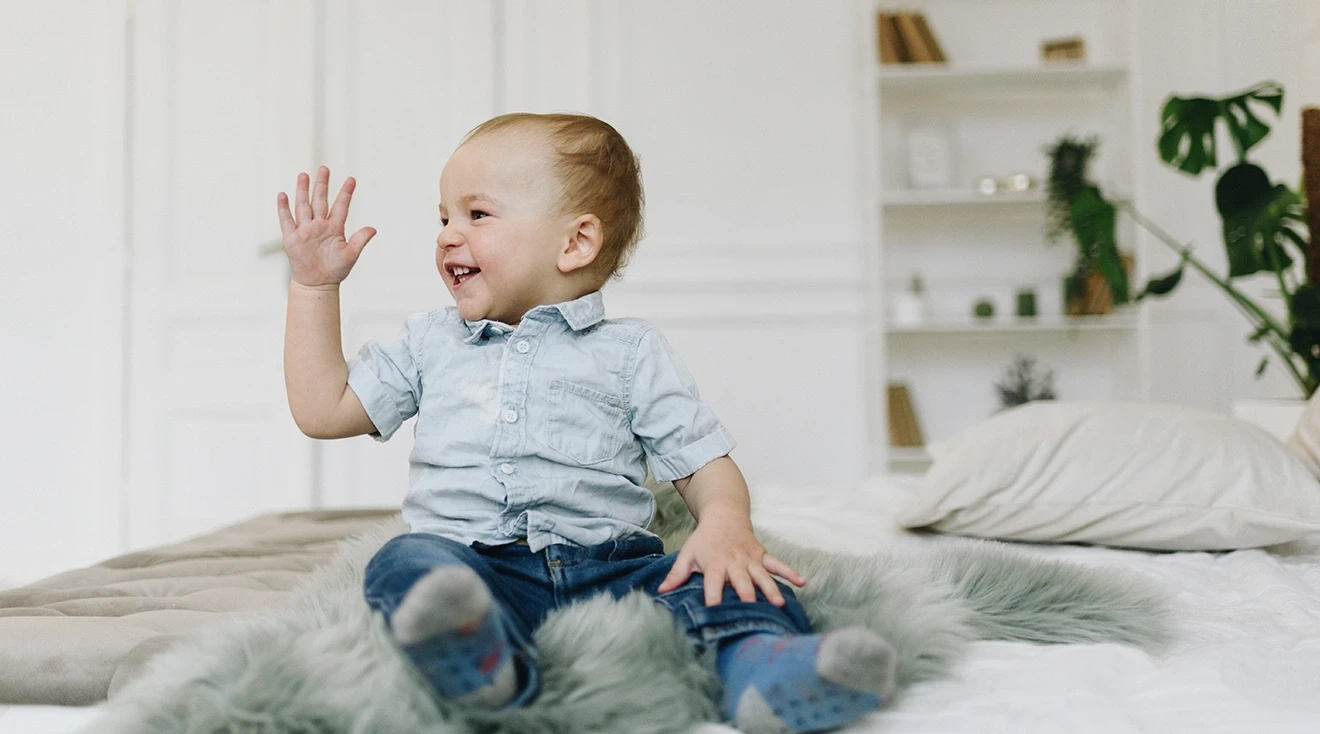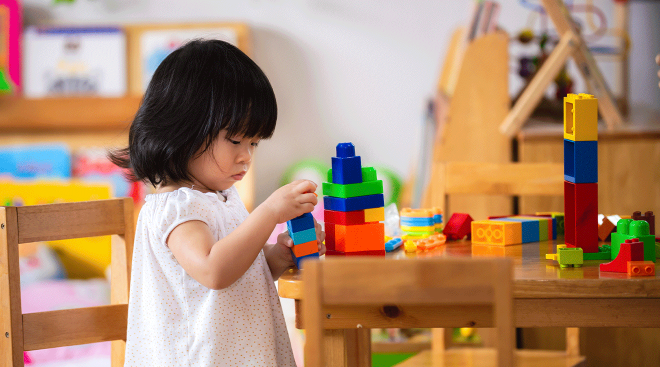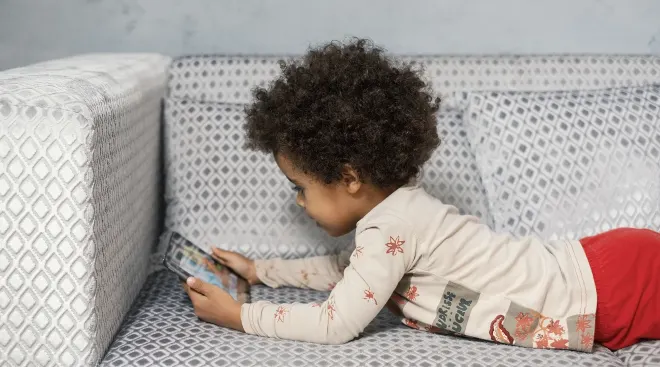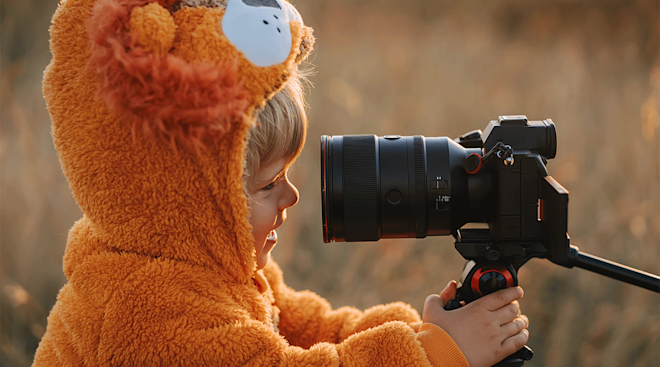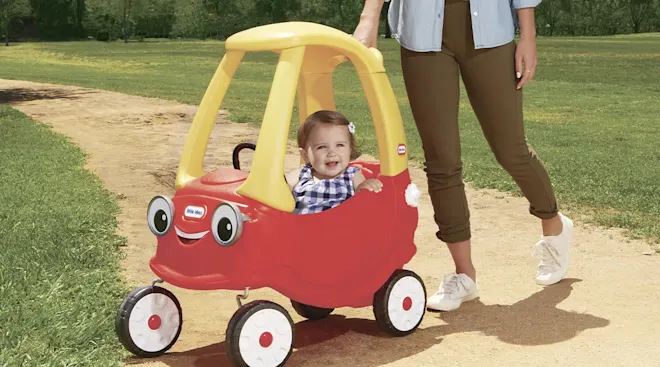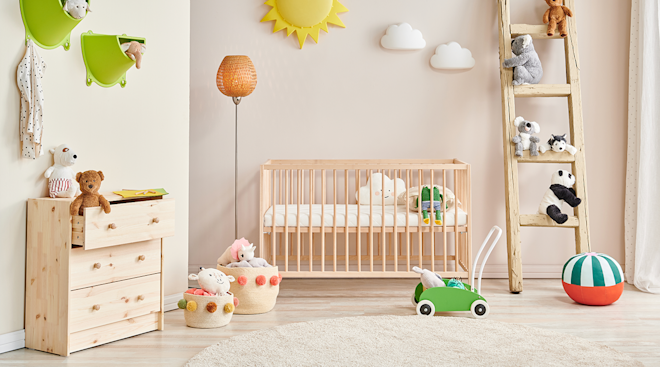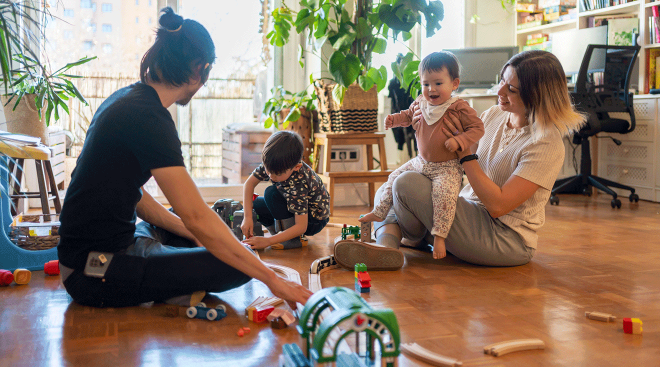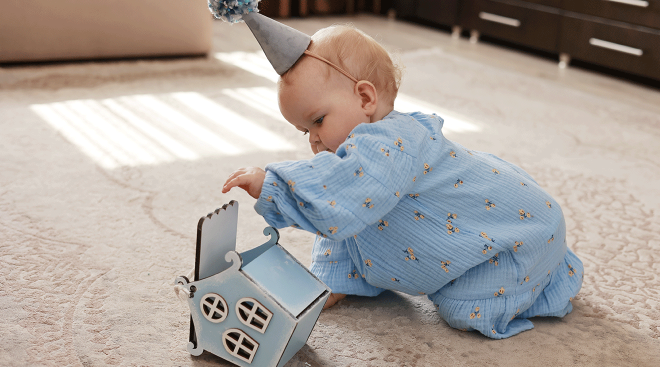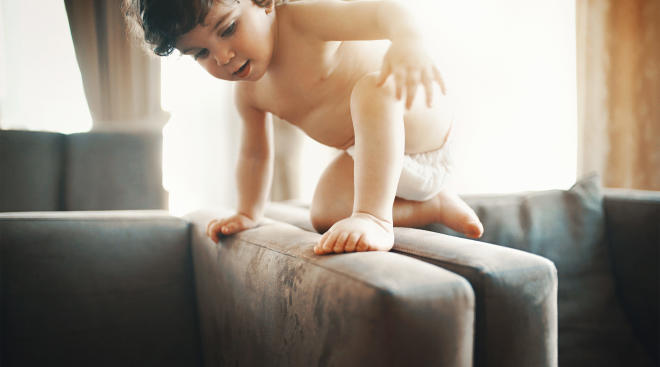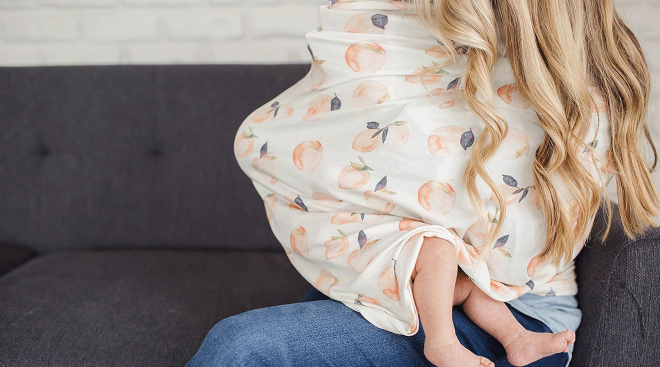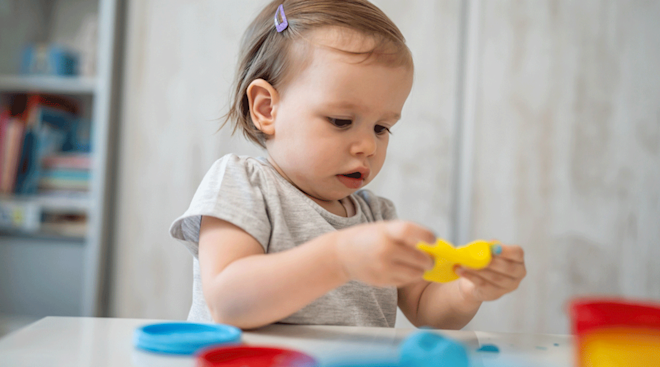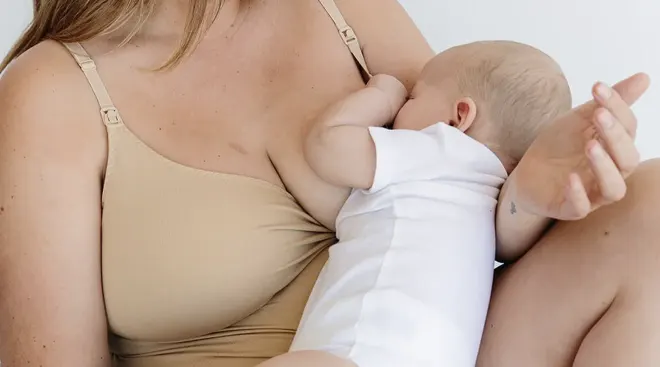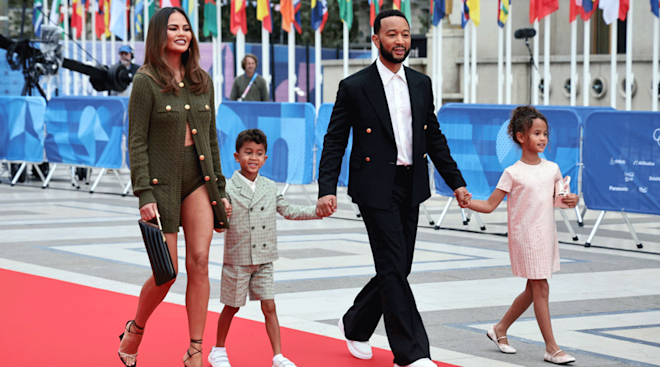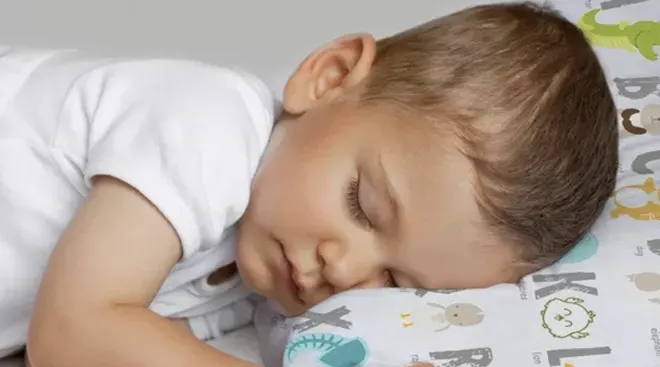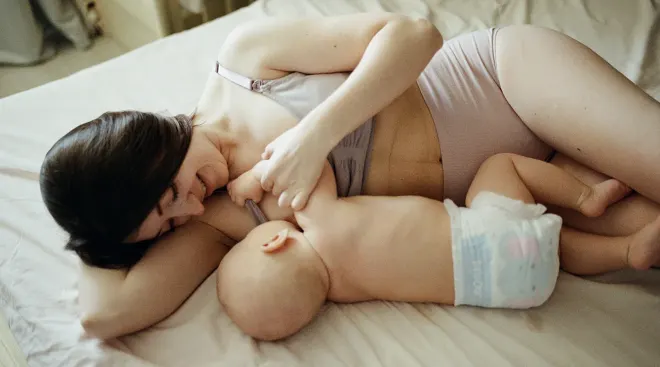How to Teach Toddlers About Appropriate Greetings and Boundaries
“Give Aunt Patty a smooch!”
“Where’s my hug?”
“Is that how you greet Grandma?”
Well-meaning relatives may have their own ideas about how your child should roll out the red carpet for their grand arrival, but expectations for effusive and physical greetings can feel incredibly overwhelming for toddlers. So when it’s time to welcome guests at the door, your little one may act shy or unfriendly, or they might try to avoid an awkward encounter altogether. So what can you do to smooth over the situation—and how can you teach your child about ways of participating in these greetings without compromising their own boundaries and personal space? It’s a delicate balance but an important lesson to learn. Here are expert tips to help you broach this sometimes tricky terrain.
Greetings set the tone. Whether it’s a preschool teacher ushering her littles into the classroom or a family opening up their home to far-flung relatives, it’s important to make people (big and small) feel welcome and wanted. What’s more, this simple transaction builds empathy, trust and mutual respect.
As an adult, greeting someone might feel like second nature. But to a young child, it can be an anxiety-inducing experience—a performance of sorts, where they don’t know their lines or cues. Fortunately, practice and thoughtful prompts can help them do more than simply play the part.
“Teaching greetings presents an opportunity to unlock a plethora of social skills, including manners, self-advocacy, social awareness and empathy, all while naturally supporting your child in building vital connections,” says Rachel Bradley, PhD, BABC-D, a child psychologist, behavior analyst and parent-child interaction therapist in Chapel Hill, North Carolina. In short, these seemingly small moments can serve as the foundation of socialization. Moreover, helping your kiddo greet others with genuine kindness and feeling can contribute to a greater sense of confidence.
“Teaching your child about boundaries gives them a foundation for building healthy relationships throughout their life,” says Bradley. “Some of the earliest encounters with boundaries come in the form of recognizing personal space and communicating needs about personal space with others.”
The idea of boundaries might be hard for your toddler to grasp at first; it’s not exactly a concrete concept, and the so-called rules change depending on the person in question and the situation at hand. Nevertheless, maintaining an ongoing conversation will help your child feel supported and safe during new experiences. “Clear communication of needs should be taught and reviewed with your child ahead of time,” adds Bradley. Remember, boundaries can be short and simple at this age. If they’re not comfortable being touched, that’s a pretty clear-cut rule right there.
Some kids will have zero qualms about hugging a friend or relative. Others might be more guarded. It’s important to respect your child’s nature and give them grace and space. Encourage them to be open and honest about their needs and feelings so that you can gauge these situations together. In the meantime, here’s how you can help toddlers learn to greet people while honoring their boundaries:
- Practice, practice, practice. “First, model greeting an adult or a child, and ask your child to copy your behavior,” advises Lynn Azarchi, executive director of Kidsbridge Center in Trenton, New Jersey. “Find a quiet time to say ‘hello, how are you?’ to imaginary friends, and have your child join in.” You can even get a favorite stuffed animal or family pet involved.
- Work on eye contact. According to Cedars Kids, eye contact fosters healthy social interaction and even boosts language skills. What’s more, when greeting friends, eye contact can demonstrate confidence and kindness. Keep in mind though that making eye contact can be overwhelming for some kids, so don’t force the issue.
- Use different phrases. If your child typically needs time to warm up, practice friendly phrases and questions. There are lots of pleasantries and compliments to try out. Your little one is young right now, but carrying a conversation is a life skill and an art form.
- Offer praise. “Comment positively when your toddler practices,” suggests Azarchi. You want this to be a good experience for them, and they’re looking for your guidance and reassurance in these vulnerable moments.
- Try sign language. “If your toddler resists practicing verbal greetings, teach them the ASL (American Sign Language) sign for “hello,” and practice it together,” suggests Azarchi.
- Offer alternatives. Your child might not want to be physically affectionate with everyone who approaches with outstretched arms. Don’t force hugs and kisses (remember, consent is critical). Offer up options they may feel more comfortable demonstrating: a high-five, a handshake, a cute curtsy or bow—whatever feels appropriate to them at the moment.
- Encourage self-advocacy. Remember, it’s not necessarily a bad thing if your toddler asserts their developing independence with a boisterous or confident “no!” In fact, Azarchi says this is age-appropriate, normal and healthy. Watching your little ones establish their own boundaries can be a beautiful thing. They’re standing up for themselves and practicing self-advocacy. Pat yourself on the back and be proud.
- Be on their side. Exercising boundaries can be extra-challenging for young kids when they’re dealing with adults. (After all, they’ve been taught to listen to grown-ups.) If and when necessary, step in to advocate for your child.
It’s also worth noting that some kids are naturally more extroverted than others. They may go straight for a bear hug or a smooch on the lips without pause. This is a blessing when a grandparent comes to visit, but it’s not necessarily ideal when they’re around other, potentially less-enthusiastic kids. “Just as it’s important to help others recognize the boundaries your child has set, it’s important to support your child in recognizing the limits of others,” says Bradley. “By teaching our children to both require and seek consent before entering into someone’s personal space, we teach them some of the earliest and most basic forms of respect for others,” she adds. You might need to help your child identify the signs and cues that others are uncomfortable with their behavior (shirking away, saying “no” or whining, etc). “With time, practice and reinforcement, they’ll soon be able to navigate these situations independently,” says Bradley.
How to respond when adults expect greetings from your toddler
Of course, when you add a pushy family member to the larger picture, greetings can feel forced and boundaries can become blurred. You don’t want a loved one to feel upset when they don’t get the affectionate reaction they had hoped for, but you certainly don’t want to put your child in an uncomfortable position. Time to double down on communication. “It may be helpful to proactively explain to adults that you and your child are practicing communicating consent,” suggests Bradley. “Reinforce your child’s decision. Not only does that communicate to others that your child has autonomy over their body, but it validates your child’s emotions and demonstrates that you have their back.”
Plus, more from The Bump:
Lynne Azarchi is the executive director of Kidsbridge Youth Center, a nonprofit organization dedicated to fostering bullying prevention, anti-bias, diversity appreciation, empathy and empowerment strategies for youth, outside of Trenton, New Jersey. She is also the author of The Empathy Advantage: Coaching Children to Be Kind, Respectful, and Successful(https://www.amazon.com/Empathy-Advantage-Coaching-Respectful-Successful/dp/1956450106?&linkCode=ll1&tag=tb-teach-toddlers-greetings-boundaries-20&linkId=f33b227794bb161c1504bde19397f0ab&language=en_US&ref=asli_ss_tl).
Rachel Bradley, PhD, BABC-D, is a clinical child psychologist based in Chapel Hill, North Carolina. She specializes in supporting children and families in their journey to understand and manage emotional and behavioral concerns. She earned her PhD in school psychology from Louisiana State University, and is a doctoral-level behavior analyst and certified parent-child interaction therapist.
Cedars Kids, [Make Eye Contact(https://cedarskids.org/news/news.html/article/2020/11/05/make-eye-contact#:~:text=Eye%20contact%20is%20important%20for,to%20engage%20in%20mutual%20gaze),,) November 2020
Learn how we ensure the accuracy of our content through our editorial and medical review process.
Navigate forward to interact with the calendar and select a date. Press the question mark key to get the keyboard shortcuts for changing dates.

































